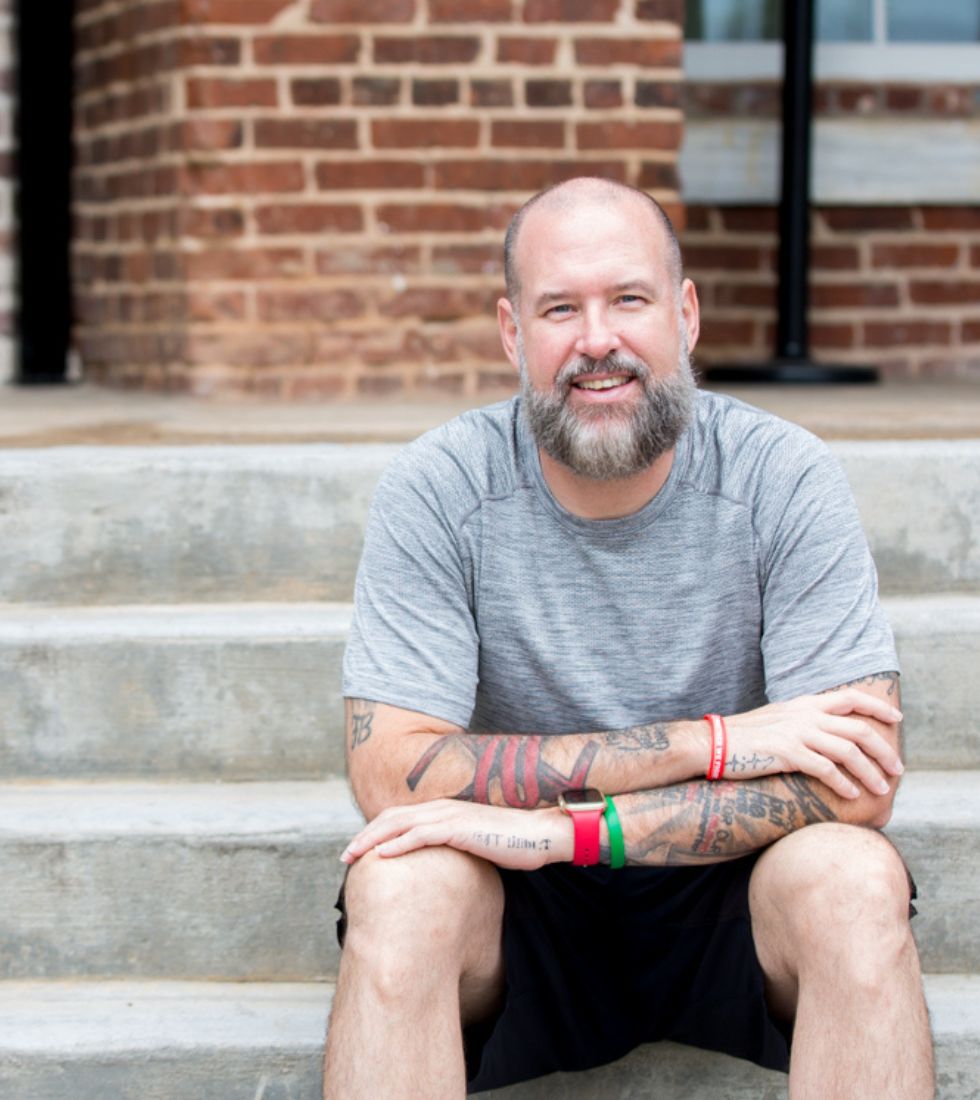“To the Wounded Avoider: Healing doesn’t mean the damage never existed. It means the damage no longer controls our lives.”
Introduction
A wounded avoider is someone who, due to deep-seated emotional scars, has developed an avoidant attachment style. This defensive mechanism often stems from past traumas, such as abandonment, neglect, or betrayal, which have led them to believe that vulnerability is dangerous. As a result, they struggle with trust and intimacy, often keeping others at a distance to protect themselves from further emotional pain.
In this article, we will explore the complexities of the wounded avoider’s experience, delving into the impacts of childhood trauma, the emotional toll of anxiety and depression, the challenges of navigating toxic relationships, and the journey toward healing and emotional well-being.
Understanding the Wounded Avoider
What is a Wounded Avoider?
A wounded avoider is someone who has developed an avoidant attachment style, characterized by a tendency to avoid intimacy and close relationships. This behavior is often a defense mechanism against potential emotional pain, rooted in past traumas. While they may appear self-sufficient and independent, beneath this façade lies a deep fear of rejection and being unloved.
Emotional Scars and Their Origins
The emotional scars that shape a wounded avoider’s behavior typically originate from past experiences of trauma, such as abandonment, neglect, or betrayal. These experiences teach the individual that vulnerability is dangerous, leading them to avoid getting too close to others. Over time, this avoidance becomes a deeply ingrained pattern that influences their relationships and overall emotional well-being.
The Role of Past Traumas in Shaping Avoidant Behaviors
Past traumas, particularly those experienced during childhood, play a significant role in shaping avoidant behaviors. A child who experiences abandonment or neglect may grow up believing they are unworthy of love, leading to a fear of emotional intimacy in adulthood. These unresolved traumas continue to influence the individual’s behavior, creating a cycle of avoidance that can be difficult to break without conscious effort and healing.
The Impact of Childhood Trauma and Wounded Avoider
Early Life Experiences and Emotional Development
Childhood is a crucial period for emotional development, where the foundation of an individual’s attachment style is formed. Positive experiences with caregivers lead to secure attachment, while trauma, such as neglect or inconsistent care, can disrupt emotional development and result in an avoidant attachment style. This learned self-reliance, while protective in childhood, becomes maladaptive in adult relationships.
How Abandonment, Neglect, and Betrayal Shape Adult Relationships
Experiences of abandonment, neglect, and betrayal during childhood can profoundly impact how a person approaches relationships in adulthood. A child who feels abandoned may grow up with a deep fear of rejection, leading to emotional distance in adult relationships. Similarly, a child who experiences betrayal may struggle to trust others, avoiding emotional intimacy to protect themselves from further hurt.
The Link Between Childhood Trauma and Avoidance in Adulthood
The connection between childhood trauma and avoidant behaviors in adulthood is well-documented. Unresolved trauma from childhood teaches the individual to suppress their emotional needs and avoid relying on others, leading to difficulties in forming close, healthy relationships. This cycle of avoidance perpetuates the emotional pain and reinforces the need for healing.
The Wounded Avoider Emotional Toll: Anxiety, Depression, and Self-Worth
Anxiety and Avoidance
Anxiety often accompanies avoidant behaviors, acting as both a cause and consequence of avoidance. The fear of emotional intimacy creates a heightened state of anxiety, leading to withdrawal and pushing others away. This cycle reinforces the individual’s anxiety and avoidance patterns, making it challenging to form meaningful connections.
Depression and Emotional Withdrawal
Depression is another significant emotional toll for wounded avoiders. The chronic avoidance of emotional connection leads to feelings of isolation, loneliness, and despair. Suppressing emotions and avoiding meaningful relationships can result in a deep sense of emptiness and sadness, perpetuating a cycle of depression and low self-worth.
Struggles with Self-Worth
Low self-worth is often at the core of a wounded avoider’s struggles. Emotional scars from past traumas can leave an individual feeling unworthy of love and connection. This diminished self-worth drives avoidant behaviors, as the individual fears rejection and believes they are undeserving of a healthy, loving relationship. Building self-worth is crucial for healing and opening up to the possibility of love and connection.
Navigating Toxic Relationships and the Wounded Avoider
The Attraction to Toxic Relationships
Wounded avoiders are often drawn to toxic relationships, a pattern rooted in unresolved traumas. These relationships, characterized by manipulation, control, and emotional abuse, feel familiar to someone who has experienced similar dynamics in childhood. The avoider may subconsciously seek out partners who reinforce their negative self-beliefs, leading to a cycle of repeated hurt and disappointment.
Recognizing the Signs of a Toxic Relationship
Identifying the signs of a toxic relationship is crucial for a wounded avoider. Toxic relationships often involve patterns of control, manipulation, and emotional abuse, such as belittling, guilt-tripping, and creating dependency. Recognizing these signs is the first step in breaking free from a toxic dynamic and protecting one’s mental and emotional health.
Breaking the Cycle of Toxic Attachments
Breaking free from toxic relationships requires a commitment to self-awareness and change. This process involves recognizing the patterns that draw the avoider into harmful relationships, setting clear boundaries, and seeking support from trusted friends, family, or professionals. Therapy can be particularly helpful in this process, providing tools to heal from past traumas and develop healthier relationship dynamics.
The Healing Journey: Overcoming Avoidant Behaviors
Acknowledging the Pain of the Past
The first step in healing is acknowledging the pain and trauma from the past. This involves confronting the emotional wounds that have been suppressed and recognizing how they have shaped current behaviors and relationships. Acceptance is key to beginning the healing process and sets the foundation for all subsequent efforts.
Learning to Trust Again
Rebuilding trust is a gradual process that involves both self-trust and learning to trust others. It starts with small steps, such as opening up about emotions with a trusted friend or therapist. Trusting again doesn’t mean being naïve; it means recognizing that while some relationships may end in hurt, others can be sources of deep connection and love.
Embracing Vulnerability
Embracing vulnerability is a critical part of the healing process. It involves letting go of the fear of being hurt and allowing oneself to be seen by others, flaws and all. By gradually exposing oneself to vulnerability in safe situations, the avoider can start to build resilience and trust in their ability to navigate emotional connections.
Professional Guidance on the Path to Healing
Professional guidance is often necessary for healing from avoidant behaviors. A skilled therapist or coach can help navigate emotions, identify patterns of avoidance, and develop strategies for building healthier relationships. Techniques such as mindfulness, cognitive-behavioral therapy (CBT), and somatic experiencing can be valuable tools in the healing journey.
Wounded Avoider: Embracing the Journey to Healing and Connection
The Importance of Consistent Effort and Self-Reflection
Healing from avoidant behaviors is an ongoing journey that requires consistent effort and self-reflection. Progress may be slow, but every step forward is a victory. The key is to remain committed to the process, recognizing that healing is a journey rather than a destination.
Celebrating Small Victories on the Path to Emotional Well-Being
In the journey of healing, it’s important to celebrate small victories. Whether it’s a moment of openness in a conversation or the courage to set a boundary, each step is significant. Celebrating these victories helps reinforce positive changes and motivates continued growth.
The Ongoing Nature of Healing and Personal Growth
Healing from avoidant behaviors is an ongoing process that extends beyond addressing past traumas. It involves continuous personal growth, learning, and adapting. Embracing this ongoing nature of healing allows the individual to remain open to change and to continue evolving into a more secure, emotionally healthy person.
FAQs
Q1: What is a wounded avoider?
A wounded avoider is someone who, due to past emotional traumas, has developed an avoidant attachment style, leading them to avoid intimacy and close relationships as a defense mechanism.
Q2: How does childhood trauma affect adult relationships?
Childhood trauma, such as abandonment or neglect, can lead to a fear of intimacy and trust issues in adult relationships, often resulting in avoidant behaviors.
Q3: Can anxiety and depression be linked to avoidant behaviors?
Yes, anxiety and depression are often linked to avoidant behaviors. The fear of emotional intimacy and the suppression of emotions can lead to heightened anxiety and feelings of isolation and depression.
Q4: How can someone break free from toxic relationships?
Breaking free from toxic relationships involves recognizing harmful patterns, setting clear boundaries, and seeking support from trusted individuals or a therapist.
Q5: What steps can a wounded avoider take to heal?
Healing for a wounded avoider involves acknowledging past trauma, learning to trust again, embracing vulnerability, and seeking professional guidance to develop healthier relationship dynamics.

Somatic coach (therapist) in Canton, GA, and Worldwide Life Coach dedicated to inspiring and assisting people worldwide through candid conversations about anxiety. Having personally battled general anxiety, panic disorder, and OCD, I understand the daily challenges those grappling with anxiety face. My journey involved searching for the right therapist, medication, and natural supplements and undergoing various tests. It was only after deciding to reclaim my life that I finally overcame anxiety’s hold. I’m passionate about helping others conquer their struggles and discover their life purpose.

